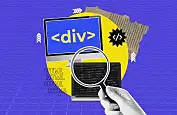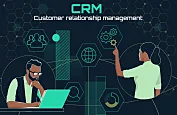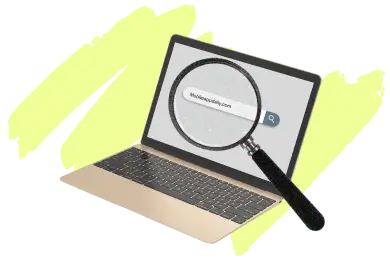
- What is Flutter App Development?
- Pros and Cons of Flutter App Development
- Cost to Develop a Flutter App
- Factors Affecting the Cost to Develop a Flutter App
- How to Reduce the Flutter App Development Cost?
- Flutter App Development Process
- The Timeline of Flutter App Development
- Flutter App Development Examples: The Cost Breakdown
- Securing the Ideal Flutter App Development Partner with MobileAppDaily
- Conclusion

In recent years, developers have been searching for easy solutions to create cross-platform apps with beautiful designs, high performance, and fast development cycles. The rise in the popularity of cross-platform mobile application development frameworks has led the software engineering community to appreciate the advantages of such technologies. Understanding the Flutter app development cost is crucial as developers consider the investment required for these versatile projects.
As per a developer survey conducted in 2023, it has been found that Flutter is the most well-known and commonly used cross-platform framework among global developers. In the survey, nearly 46% of the software developers have selected Flutter. This shows that the Flutter framework is now essential for developers making the next generation of mobile apps.
Keep reading to learn more about the flutter mobile app development and the costs associated with it. We'll also explain its development process and real-world examples.
What is Flutter App Development?
Flutter is a software toolkit made by Google. It allows developers to create apps for different devices like phones and tablets. Flutter mobile app development uses a single code set to build apps that work on multiple platforms. Unlike other tools in the market, Flutter is not a framework or a library. However, Flutter is a complete SDK (software development kit) with everything needed to build Flutter app. Flutter has 163k stars, 26.8k forks, and 1378+ contributors on GitHub, showcasing its dominance in the cross-platform SDK market in a short time.
Flutter includes several key components:
- The Dart Programming Language: Flutter uses Dart, a language made by Google. Dart can turn code directly into native apps for mobile and desktop. It can also create web apps using JavaScript. This makes top apps built using the Flutter framework run smoothly.
- Widget-based Design: Flutter uses widgets to build app interfaces. Widgets are reusable user interface components. Flutter comes with many pre-built widgets. Developers can also customize widgets or create new ones.
- Rendering Engine: Flutter has its rendering engine. This helps Flutter apps work smoothly on different devices and systems.
- Testing and Integration Tools: The Flutter SDK has tools for testing. It can run unit, widget, and integration tests. It also works with CI tools for continuous delivery.
- Development tools: Flutter DevTools help developers debug code, analyze performance, and inspect layouts. It's also called Dart DevTools.
Flutter has come a long way since its start in 2018. At first, it focused on mobile apps. But Flutter 2 expanded to web and Windows platforms. Flutter 3 added support for Linux and macOS, including Apple Silicon chips. This lets developers create user interfaces for six platforms using one codebase, including Android, iOS, MacOS, the web, Linux, and Windows.
Recent updates brought Flutter mobile app development into game development. The Casual Games Toolkit in Flutter 3 lets you quickly build different game types for iOS and Android. It has monetization features and hooks into platform game services. Flutter is a powerful, versatile solution for cross-platform app development. It offers many tools and capabilities that keep growing to meet modern software needs.
Why Use Flutter for App Development?
Flutter is a great choice for app development. It allows you to create apps for multiple platforms with just one codebase, and this saves time and resources. This efficiency significantly impacts the Flutter app development cost, making it a cost-effective option. Flutter has a wide library of widgets, and you can also make real-time changes with hot reload. Apps made with Flutter perform well, like native apps.
Flutter also boasts a highly active and supportive community. This ensures that developers have access to extensive resources, tutorials, and third-party plugins. This makes problem-solving more manageable and accelerates the development process. Additionally, Google's backing provides confidence in Flutter's long-term viability and continual improvement. Choosing Flutter has many benefits. Its growing popularity enhances the efficiency of app development. It also improves the quality of your apps. Flutter aligns your projects with future technological advancements. This makes it a smart choice for developers.
ALSO READ: LinkedIn Report Shows Flutter To Be The Most Preferred Skill Among Software Engineers
Pros and Cons of Flutter App Development
Now, let’s take a look at the drawbacks and benefits of flutter app development offers.
Pros of Flutter App Development
Here are the following benefits of Flutter app development:
- Efficient UI Development: The widget-oriented architecture of Flutter provides a quick and uniform user interface framework on various platforms. The unified approach of everything as a widget is one of the primary reasons which makes development easier.
- Dart Programming Language: Dart gives the flexibility of programming for app development with a mix of Ahead-of-Time (AOT) and Just-in-Time (JIT) compilation. Also, it is a way to join an app's design and functionality and do direct native code compilation without any bridges between mobile app development languages.
- Gentle Learning Curve: Flutter caters to developers of all experience levels, including those new to mobile development. Detailed documentation and abundant learning resources aid in understanding it.
- Hot Reload Functionality: The hot reload feature enables real-time code updates, boosting developer productivity and facilitating rapid iteration and experimentation.
- High Performance: Flutter applications demonstrate impressive performance metrics, often matching or surpassing native apps in frame rates and launch times.
- Cross-platform Portability: Flutter 3 lets coders make apps that run on iOS, Android, web, Linux, macOS, and Windows. This is called cross-platform portability. With one code base, developers can launch apps for different platforms.
- Google's Ecosystem Integration: Google backs Flutter as part of its tech ecosystem. Flutter will likely keep growing strong. It may even work with Google's upcoming Fuchsia operating system in the future.
Cons of Flutter App Development
Here are the following cons of using Flutter mobile app development:
- Limited Third-Party Libraries: Flutter has fewer third-party tools compared to older frameworks. However, its library of over 25,000 packages is growing fast. You may need to create custom code sometimes due to this limitation.
- Dart Language Adoption: The Dart programming language used by Flutter is not as popular. Finding experienced Dart developers can be tricky. This smaller talent pool might slow down team building.
- Application Size: Flutter apps tend to be larger than native apps made with Java or Kotlin. The minimum size exceeds 4MB due to the built-in widgets. Large apps may burden devices with limited storage.
Cost to Develop a Flutter App
The cost of flutter app development is broad, usually between $20,000 and $250,000. This cot can vary based on several factors. Let us grasp at the factors impacting the cost of Flutter app development:
Flutter App Development Cost Based on Project Complexity
The cost of developing a Flutter app can vary significantly based on the project's complexity. Here's a breakdown of the estimated price ranges for different complexity levels.
| Complexity | Price Range |
|---|---|
| Low Complexity | $20,000 - $55,000 |
| Medium Complexity | $55,000 - $100,000 |
| High Complexity | $100,000 - $250,000 |
App Features and Functionality
The features and functions of a Flutter app are key factors in deciding how long it takes to develop and how much it costs. Here, you can see the estimated time and cost based on the app's complexity and number of screens.
| Flutter App Features | Time | Screens | Price Range |
|---|---|---|---|
| Simple App | 3-4 months | 5-10 screens | $20,000 - $50,000 |
| Basic App | 4-9 months | 10-15 screens | $50,000 - $100,000 |
| Complex App | 10-24 months | 15-25 screens | $100,000 - $255,000 |
Flutter App Development Cost Based on App Category
Different types of apps take different amounts of time and money to develop. The table below provides estimates for various app categories.
| Category | Time | Price Range |
|---|---|---|
| Gaming Apps | 5-20 months | $50,000 - $300,000 |
| Entertainment Apps | 4-25 months | $8,000 - $90,000 |
| Travel Apps | 4-10 months | $8,000 - $90,000 |
| Augmented Reality Apps | 5-25 months | $150,000 - $350,000 |
| Communication Apps | 8-15 months | $25,000 - $60,000 |
| Tools Apps | 3-8 months | $6,000 - $12,000 |
| Productivity Apps | 4-9 months | $8,000 - $15,000 |
| Social Media Apps | 4-12 months | $25,000 - $60,000 |
Developer Rates (vary by location and experience)
The hourly rates for Flutter app developers vary by location and experience level. This overview shows typical rates in different countries.
| Country | Cost of Flutter App Development per Hour |
|---|---|
| UK | $50-$75/hour |
| US | $70-$140/hour |
| Germany | $23-$38/hour |
| Canada | $35-$65/hour |
| India | $20-$45/hour |
| Ukraine | $35-$80/hour |
Additional Flutter App Development Cost
Apart from the production costs, there also might be extra expenses. These can be server costs, app store expenses, and fees for deployment, maintenance and updates, or third-party API integrations.
- Server expenses ($1000+/month)
- App Store deployment fees (Apple App Store: $99/year, Google Play Store: $25 one-time fee)
- Maintenance and updates (approx 15-20% of the initial cost of Flutter app development annually)
- Third-party API integrations (Based on the API)
The platforms you choose (iOS, Android, web) play a role. More complex user interface and user experience designs cost more. Backend requirements and security needs also increase flutter app development cost. Your hiring approach, whether outsourcing, freelancing, or in-house development, impacts the total expense too.
To save money, prioritize the most important features first. Clearly explain what you need from the start. Use test-driven development to catch issues early. Decide if you need an in-house team or can outsource based on your budget.
Factors Affecting the Cost to Develop a Flutter App

Several crucial aspects can greatly influence the overall expenses involved in building a Flutter application:
- App Complexity: The complexity of the app plays a key role in determining costs. Apps packed with extensive features, intricate user interfaces, and numerous screens demand more time and effort from developers, resulting in higher expenses.
- Design Requirements: Custom designs and complex UI/UX elements can prolong development times and increase costs. Apps requiring unique branding elements, animations, or specialized interactions generally come with higher price tags due to the need for skilled designers and developers.
- Developer Experience: The level of experience within the development team affects both the quality and speed of app development. While more seasoned developers may command higher hourly rates, they can often deliver more efficiently and with fewer errors, potentially reducing long-term costs associated with debugging and maintenance.
- Backend Setup: The complexity of the backend infrastructure needed for the app, including server configuration, database management, and integration with third-party services or APIs, impacts development costs. Apps relying on extensive backend functionalities or real-time data processing require robust infrastructure and greater development effort.
- Geographical Location: Development costs vary widely across regions due to differences in labor rates and operational expenses. Offshore development teams located in countries with lower costs of living and wage expectations can offer substantial savings compared to developers in regions like North America or Western Europe.
- Maintenance and Updates: Your app needs steady care and improvements. Regular updates help it run smoothly, fix security issues, and work with new operating systems. Set aside money to maintain your app over time.
How to Reduce the Flutter App Development Cost?

Small business owners often struggle with expenses. App development can be a major cost. Here are strategies to reduce Flutter app expenses without quality loss:
Outsourcing Development
Outsourcing Flutter development can save money. As Flutter grows popular, finding skilled outsourced devs gets easier than hiring in-house full-time staff. Partnering with a reputable software firm can streamline the process. This could reduce both costs and time-to-market.
Leveraging Freelance Talent
Using freelance platforms like Upwork or Freelancer can be budget-friendly, especially for smaller, simpler projects. Skilled Flutter freelancers on these sites typically charge $20-$35 per hour. For bigger projects, consider a small freelance team to balance cost and efficiency.
Feature Prioritization
Taking a minimalist approach to app features can greatly cut development costs. Focus on core functionalities that deliver the most value to users. This strategy also enables faster development cycles and more frequent, meaningful updates. Prioritizing essential features ensures a better user experience. It can also lead to higher customer satisfaction.
Utilizing Pre-built Components and Libraries
There are many open-source pieces you can use in your app. These pieces do things like make buttons or menus. Using pre-made pieces saves you time. You don't have to build everything yourself. The pieces are also well-tested, so they work reliably. Focus on customizing the pieces for your needs instead of starting over.
Use this method to make good Flutter apps without spending too much money. Don't add every feature you can think of. Make an app that does what users need well. This balanced way helps make successful apps while keeping costs down.
Flutter App Development Process

The Flutter app development process involves several key steps:
Installation and Setup
- Install the Flutter SDK on your development machine (Windows, macOS, or Linux).
- Check your possible integrated development environment (IDE), such as Android Studio, Visual Studio Code, or IntelliJ IDEA, and develop the Flutter and Dart plugins alongside them.
- Set up the development environment by installing all the required dependencies and tools, such as Android Studio, Xcode, or Android SDK.
Project Creation
- Use the `flutter create` command to generate a new Flutter project with the necessary files and folder structure.
- The right project type (e.g., Flutter Application, Flutter Module, Flutter Package, or Flutter Plugin) can be decided based on your requirements.
- Change the project settings, such as the app name, organization, and package name.
UI Design and Development
- Build the user interface of your app with Flutter's widgets or custom-made ones. Flutter's widgets cover many common UI elements like buttons, text inputs, and layouts.
- Put together the UI by combining widgets, managing state, and handling user actions. Use Flutter's hot reload to quickly see code changes without losing the app's state.
Business Logic and State Management
Create the business logic and data management parts of your app. This includes API calls, database tasks, and state management. Choose a state management solution like Provider, Bloc, or Riverpod to manage your app's state efficiently. Make sure your app's structure follows best practices. It should be scalable and easy to maintain.
Testing and Debugging
Write unit tests, widget tests, and integration tests. This ensures your app works well and is reliable. Use Flutter's debugging tools like the Flutter Inspector and Dart DevTools to identify and fix issues. It is recommended to test your app on different devices and screen sizes manually. This checks for a consistent user experience across platforms.
Packaging and Deployment
Get your app ready for release. Optimize its performance, manage app size, and address security concerns. These steps prepare your app for launch. Creating launch builds for Android and iOS is crucial. You must share your app with app stores, like Google Play and Apple App Store, for review before release. Once it's published, monitor user feedback and any reported issues. Update your app frequently with new features, bug fixes, and security updates. This keeps it engaging for users.
Maintenance and Updates
- Keep an eye on how well your app works. Check user reviews and any problems they report. This helps you understand what needs improvement.
- Update your app regularly with new features, bug fixes, and security patches. This keeps your app interesting and useful for users.
- Use Flutter's hot reload and hot restart tools. They let you quickly update your app without rebuilding the whole thing from scratch.
Building a Flutter app is an ongoing process. You may need to revisit earlier steps as issues come up. Follow this approach to create a Flutter app that works smoothly across different devices and platforms.
The Timeline of Flutter App Development
The timeline of developing the Flutter application depends on the app's features and team size. However, the process generally follows these steps:
| Phase | Duration |
|---|---|
| Planning and Goals | 1-2 Weeks |
| User Interface Design | 2-4 Weeks |
| App Development | 6-12 Weeks |
| Testing | 2-3 Weeks |
| Release | 1-2 Weeks |
| Maintenance | Ongoing |
- Planning and Goals: The first phase may require about 1-2 weeks. It consists of the definition of the application's scope, the functions it needs, and its goals.
- User Interface Design: This design step lasts 2-4 weeks. The team creates mockups and prototypes and shows how the app will look. Complex designs may take longer.
- App Development: This is the stage where most of the time is spent, and it is the main coding part, generally taking 6-12 weeks for medium complexity.
- Testing: Testing happens alongside development. But it gets more intense near the end. This step takes 2-3 weeks. Developers check for bugs and errors.
- Release: The process typically involves a few stages, like a 1-2-week period spent on the final app optimization and submission to app stores.
- Maintenance: After launch, the app needs ongoing support. Developers fix issues and add updates. This continues throughout the app's life.
Mobile apps have varying development times. A medium-complex Flutter app may take 12 to 16 weeks from start to release. Simpler apps could finish in 8-10 weeks. More complex projects may extend beyond 20 weeks.
Several factors affect the timeline:
- The number and complexity of features required
- The size and skill of the development team
- If custom backend development is needed
- The extent of integrating with third-party services
- How complex the user interface and experience design is
App development is often an iterative process. Many teams use agile methods. This allows continuous improvements and adding features, even after the initial launch.
Flutter App Development Examples: The Cost Breakdown
When venturing into the realm of Flutter app development, understanding the financial aspects is crucial. Flutter app development cost varies significantly based on the app's complexity, features, and design specifics. This section provides a comprehensive breakdown of the cost of Flutter app development for several real-world applications. These Flutter app development examples illustrate the diverse nature of the process and offer insights into the budgeting necessary for potential app developers.
Google Ads
The cost to develop a Flutter app like Google Ads can range significantly due to its sophisticated advertising features and integration capabilities. Estimated development cost: $50,000 - $70,000.
Reflectly
Reflectly leverages AI to provide personalized mental health assistance. The complexity of AI integration influences the Flutter app development cost. Estimated development cost: $40,000 - $60,000.
Postmuse
Designed for social media enthusiasts, Postmuse offers tools for enhancing Instagram posts. The cost reflects the design tools and UI/UX sophistication. Estimated development cost: $20,000 - $40,000.
Pairing
Pairing, a dating app, requires robust security features and a smooth user interface, affecting the overall cost of Flutter app development. Estimated development cost: $30,000 - $50,000.
Hamilton
The Hamilton app offers an engaging way to explore the musical's content. Media integration and interactive features drive up the Flutter app development cost. Estimated development cost: $25,000 - $45,000.
Meritec Digital Learning
Focused on e-learning, this app requires complex functionalities for course delivery and user management, impacting the cost to develop a Flutter app. Estimated development cost: $35,000 - $55,000.
Cryptograph
As a financial application, Cryptograph needs high-level security measures and real-time data processing, influencing its development cost. Estimated development cost: $50,000 - $70,000.
Watermaniac
Watermaniac, aimed at tracking water intake, demands less complex development but needs reliable notification features. Estimated development cost: $15,000 - $30,000.
These examples demonstrate that the cost of Flutter app development can vary widely based on the app's purpose and required features, illustrating the flexible yet scalable nature of the Flutter platform.
Securing the Ideal Flutter App Development Partner with MobileAppDaily
Launching a successful Flutter app hinges on choosing a development partner with the right blend of skills and resources. MobileAppDaily stands out as a pivotal resource, offering access to top-tier Flutter app development companies known for their excellence and dependability. Here’s what makes MobileAppDaily invaluable in your search for the perfect Flutter app development partner:
Deep Expertise
The companies featured on MobileAppDaily are well-versed in cutting-edge Flutter development techniques, boasting proficiency in both design and technological implementation.
Customized Solutions
MobileAppDaily helps you connect with a development partner whose capabilities are precisely aligned with the specific needs of your app project.
Reputation and Transparency
With a rigorous selection process, MobileAppDaily ensures that you collaborate with reputable and transparent companies, fostering a reliable and effective partnership.
Conclusion
The flutter app development cost can range anywhere from $15,000 to $150,000 or more, depending on the app's complexity and features, as well as the expertise of the development team, design, backend infrastructure, and ongoing maintenance.
As more businesses want apps on all devices, the need for skilled Flutter app development companies will grow. These companies know how to use create Flutter app. They provide clients with cutting-edge cross-platform solutions that meet modern software demands.
Frequently Asked Questions
-
How long does it take to build Flutter app?
-
How to build flutter app?
-
Is Flutter suitable for building large-scale applications?
-
How does Flutter integrate with backend services?
-
Is it cheaper to hire freelance developers or a development agency?



















